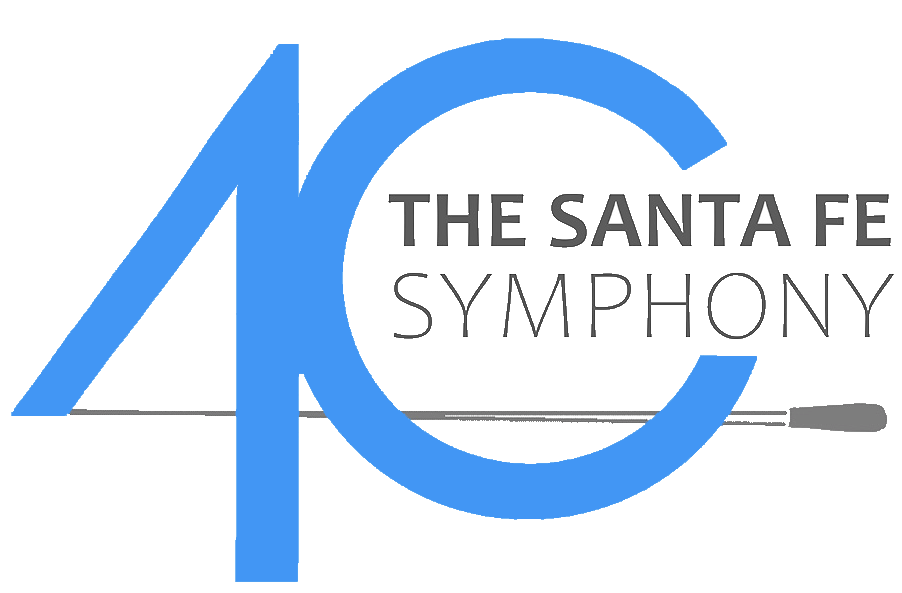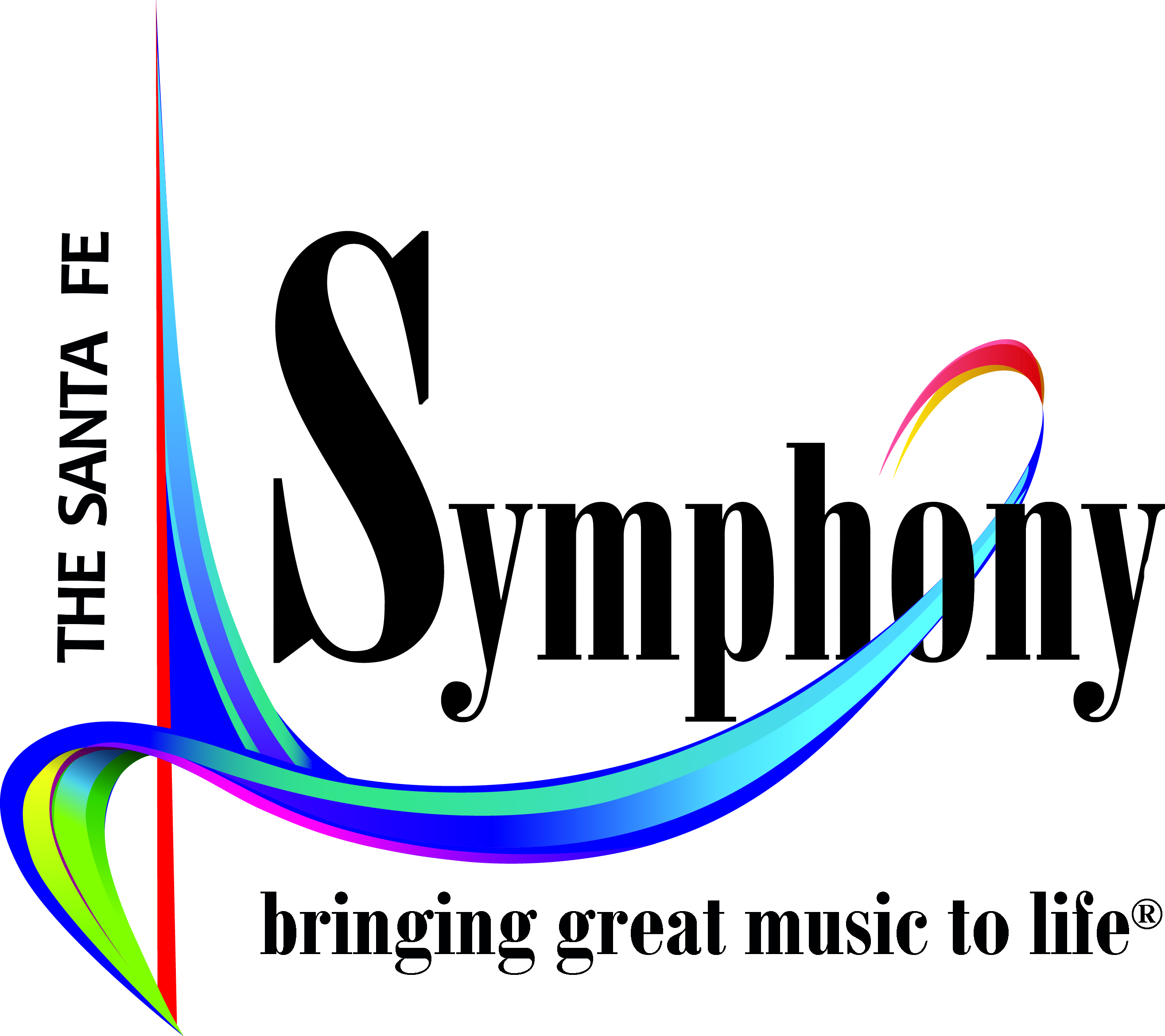Program Notes—Music of Latin America
Program Notes
MUSIC OF LATIN AMERICA
February 23 | 4:00 PM—Lensic
The Santa Fe Symphony Orchestra
Guillermo Figueroa, Music Director
The Santa Fe Symphony Chorus
Carmen Flórez-Mansi, Choral Director
JP Jofre, Bandonéon
Miguel del Aguila, Piano & Composer
Carlos Vazquez Baur, Tenor
Devin DeVargas, Bass
Caleb Heaton, Bass
Roberto Capocchi, Guitar
Dave Tolen, Principal Percussion
Aaron Morales, Percussion
Sean Umstead, Percussion
Sam Brown, Double Bass

ARIEL RAMIREZ
Misa Criolla
Kyrie
Gloria
Credo
Sanctus
Agnus Dei
Born 1921, Santa Fe, Argentina
Died 2010, Buenos Aires
Ariel Ramírez received classical training at the National Conservatory of Music in Buenos Aires and then in Europe, but a completely different world opened up for him when he discovered the music of the indigenous peoples of Argentina—the Indians, Creoles, gauchos, and others. Ramírez traveled throughout Argentina, immersing himself in that country’s folk music—not just its songs but its characteristic rhythms and instruments. From these, he fashioned his own idiom as a composer, and this concert offers what has become his most famous work, the Misa Criolla.
Two different events led Ramirez to compose the Misa Criolla. The first was the Second Vatican Council of 1962, which decided that the mass could be presented in languages other than Latin. The second occurred during a trip to Germany, when Ramírez met the sisters Elizabeth and Regina Brückner. During World War II, and at great risk to themselves, thee sisters secretly supplied food to the inmates of a nearby concentration camp. Inspired by this act of individual moral courage, Ramírez began to compose a setting of the mass.
But he took an entirely original approach to that traditional task. He set the mass in a Spanish translation, and he scored it for a single soloist (either male or female) and chorus. He accompanied the setting not with a symphony orchestra but with a small ensemble consisting of a keyboard and five native instruments, and the music for each of the mass’ five sections was derived from the folk music of a different region of Argentina. The result was the concise (29 minutes) Misa Criolla of 1964, which has been performed by choruses around the world. José Carreras, Mercedes Sosa, and Placido Domingo are among the many who have recorded it.
The Misa Criolla is in the traditional five sections of the mass—Kyrie, Gloria, Credo, Sanctus, and Agnus Dei—and Ramírez seems to move from the folk music of northern Argentina to the music of the south as the mass proceeds. The Kyrie and Gloria are both based on folk songs from the Andes. The Kyrie is restrained, moving from its quiet opening for native drum all alone to the gradual entrance of the soloist, whose phrases are answered by the chorus. The Gloria is much livelier. Based on carnival dance music, it introduces the native instruments, which are strummed, blown, or struck. The solemn Credo is derived from music of central Argentina, while the lively Sanctus once again incorporates carnival music and makes full use of the native instruments. The Agnus Dei is composed in the style of the music of the pampas.
Ramírez’s title might need some clarification for North American audiences, who associate “Creole” with the peoples of the Caribbean and Louisiana, a language, and a highly spiced cuisine. Ramírez uses the term Criolla to refer to a culture that combines its Spanish heritage with that of its native peoples. Here, the Catholic mass is presented in Spanish in a musical setting that employs indigenous music and instruments.
—Program Note by Eric Bromberger

ROBERTO SIERRA
Sinfonía No. 3, “La Salsa”
Tumbao
Habanera
Danzas
Jolgorio
Born 1953, Vega Baja, Puerto Rico
Roberto Sierra had his early music training in Puerto Rico and went on to study in Europe, some of that time spent as a student of György Ligeti in Hamburg. He returned to the Americas and over the last three decades has had a very successful career as a composer.
Sierra has been composer-in-residence with the Philadelphia Orchestra, Milwaukee Symphony, Puerto Rico Symphony, and New Mexico Symphony, and he has had works commissioned and performed by almost all the leading American orchestras. It is a measure of his international success that one of his most popular pieces, Fandangos, was performed on the opening night of the 2002 Proms by the BBC Symphony. Sierra has composed prolifically in almost all genres (including 25 concertos for a variety of instruments), and in 2010 he was elected to the American Academy of Arts and Sciences. He taught at Cornell University for nearly 30 years before retiring in 2021.
Sierra composed his Third Symphony in 2005 on a commission from the Milwaukee Symphony. The nickname “La Salsa” is key to understanding this symphony, which offers equal measures of exciting rhythms and colorful spice, each of its four movements is in a different dance form. The first movement is titled Tumbao, a word with a wide range of meaning. Musically, it refers to a rising three-note bassline rhythm, a rhythm that is fundamental to salsa, mambo, rumba and other dances. That rhythm is the first thing one hears in this symphony, and it underlies much of the first movement. But the term’s non-musical meanings are just as important, for Tumbao can also mean or suggest “sexiness,” “swagger,” or “swaying,” and all of those are part of this movement too. Both the syncopated main theme and a more flowing second idea are based on the fundamental rhythm, and the movement prominently features the sound of brass and percussion. Perhaps it is not surprising that this movement has been arranged for band and is often heard in that version.
The second movement is a habanera, the slow Afro-Cuban dance in duple meter and based on dotted rhythms (the title indicates that its place of origin was Havana). Sierra’s Habanera has a somewhat darker character than we usually associate with this dance. It has a slithering main theme, and after a quiet beginning, it builds in strength and is soon alternating tense outbursts with eerie interludes, all underpinned by the habanera rhythm.
The briefest of the movements, the Danzas is based on its jaunty opening woodwind theme. The xylophone has a particularly prominent role in this movement, which drives to a brassy climax.
The finale has another title with a range of meanings. Jolgorio is not a musical term, but more a statement of character; it has been translated variously as merry-making, festivity, fiesta, revelry, or simply celebration. A single drum sets the movement’s basic rhythm, and a series of dances, in different moods and meters, quickly follows. Some of these dances are powerful and serious, but in the closing moments the mood of celebration prevails, and the symphony drives to its powerful conclusion.
—Program Note by Eric Bromberger

ASTOR PIAZZOLLA
Concerto for Bandonéon and Orchestra, “Aconcagua”
Allegro marcato
Moderato
Presto
JP Jofre, Bandonéon
Born 1921, Mar de Plata, Argentina
Died 1992, Buenos Aires
Astor Piazzolla became famous as a composer of tangos, but his path to success was long and difficult. At age 8, his father gave him a bandoneon (the boy was disappointed; he had wanted skates). Nevertheless, Piazzolla quickly became a virtuoso on this accordion-like instrument that uses buttons rather than keys. But Piazzolla wished to succeed as a composer, and he had difficulty finding an authentic voice. He wrote a film soundtrack, created his own bands, gave concerts, and wrote a symphony that allowed him to study with Nadia Boulanger in Paris. She soon gave Piazzolla the best possible advice: that he should not try to be a “classical” composer but should follow his passion for the Argentinian tango as the source for his own music.
Piazzolla returned to Argentina and gradually evolved his own style, one that combines many strands of music: the tango, classical music, jazz, and Latin American street songs, as well as dances like the rumba, samba, and maxixe. In the process, Piazzolla transformed the tango—which had deteriorated into a soft, popular form—into music capable of a great range of expression. His tangos can be fiery, melancholy, passionate, tense, violent, or lyric, and they are always driven by an endless supply of rhythmic energy.
Piazzolla composed his Concerto for Bandonéon and Orchestra in 1979, when he was 58, and he was soloist at its premiere in Buenos Aires on December 15 of that year. Piazzolla scored the concerto for a very small orchestra, one that allows the soloist to be heard clearly: strings, plus harp, piano, timpani, and percussion. This concerto is sometimes given the nickname “Aconcagua,” but that did not originate with the composer. Rather, it was Piazzolla’s publisher who came up with it, saying “this is the peak of Astor’s oeuvre, and the highest peak in South America is Aconcagua.”
The concerto is in the three movements of the classical concerto. The opening Allegro marcato overflows with energy: Its dramatic beginning bursts to life on music full of sharp edges and syncopated rhythms. Piazzolla offers his soloist two cadenzas before the rush to the movement’s abrupt conclusion.
After the extroverted energy of the first movement, the Moderato feels restrained and intimate. In fact, it is chamber music during its long opening episode: The bandoneon begins all alone, to be joined along the way by the harp and a solo violin. Eventually, a solo cello joins this ensemble, followed by the entire orchestra.
The concluding Presto returns to the blazing manner of the first movement. Here Piazzolla incorporates some of a tango he wrote for the 1970 Argentinian film Con alma y vida, and in the midst of all the energy, he offers several quiet interludes. A long and intense closing section leads to a most emphatic conclusion.
—Program Note by Eric Bromberger

MIGUEL DEL AGUILA
Conga
Miguel del Aguila, Piano
Born 1957, Montevideo, Uruguay
Born in Uruguay, Miguel del Aquila came to the United States in 1978. After graduating from the San Francisco Conservatory, he went on to further study in Vienna, where a number of his works received their premieres.
Del Aguila has written more than 140 compositions, including an opera and works for orchestra, orchestra with soloist, chamber ensembles, keyboard, and voice.
His music has been performed by such conductors as Lukas Foss, JoAnn Falletta, Leonard Slatkin, Marin Alsop, and Giancarlo Guerrero, and by such orchestras as the Chicago, Seattle, and Nashville Symphonies, the Los Angeles Chamber Orchestra, and the Orchestra of the Americas.
Conga was composed in 1994. The composer has provided an introduction to this piece:
“Conga began as a dream. At first there was the visual image of an endless line of dead people dancing through the fire of hell. I gradually started hearing the music, which was flowing spontaneously out of me in an effort to entertain and alleviate the pain of those poor souls. I woke up and wrote the music as I remembered it.”
As the name implies, the work has a definite Caribbean flavor. The rhythmic pattern of the conga dance beats throughout the piece and is at times distorted into a 13/16 pattern. It employs unusual percussion and rhythmic structures, and instruments are often playing at their most extreme registers. The piano is used “obbligato” as a sort of metronome, very much like the harpsichord of the old Baroque times. The music is humorous, sarcastic, grotesque, sensuous and at times also terrifying. I rely mainly on the dramatic and expressive qualities of rhythm to convey the evil forces that govern my imaginary hell. As thematic material I primarily use rhythmic claves (Spanish for clef or key) as they are used in Latin American music: a sort of “rhythmic tonality” to which harmony and melody must conform. After the sensuous middle section, the work rushes frantically toward the end to explode in a dramatic finale.
—Program Note by Eric Bromberger


